Why currants dry with berries and what to do about it
Ripening of currants begins in June and lasts until August. Most gardeners grow several bushes at once - with red and black berries. Currant is distinguished not only by its bright taste, but also by its useful composition, it is especially rich in vitamin C. Caring for the bush is simple, does not require special skills. However, sometimes the bushes begin to wither, the leaves turn yellow and crumble, shoots and berries dry out. What to do in this case and how to find the cause, we will consider further.
The content of the article
Reasons for drying currants and berries on the branches and actions in this case
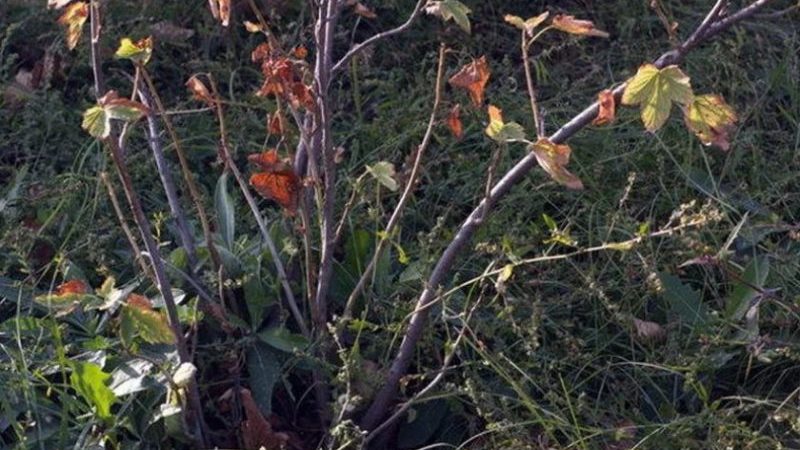
To understand why red and black currants dry branches with berries, you need to establish the reason. These can be diseases or pests, improper care, or sudden changes in the weather.
After the cause is found, it is eliminated - treatment is started or agronomic procedures are corrected. The sooner you start eradicating the cause, the higher the likelihood of preserving the berry harvest.
Growth conditions and care
Currants are unpretentious in care, however, if the rules for growing summer residents are violated, dry bushes and small berries await. They grow it along fences, but many make a common mistake - they plant shrubs close to the fence. Because of this, the currants lack room for healthy growth. The recommended distance between the bush and the fence is not less than 2.5 m, between the plants - no more than 2 m.
You can not grow currants in lowlands or on open hills. In the lowlands, cold air is infused, which harms the root system, and on the highlands there is always a lot of snow. Gardeners choose a flat or slightly hilly area for shrubs, located far from groundwater and groundwater. Otherwise, currants often suffer from fungal diseases and infect nearby growing crops.
Due to the peculiarities of the root system, currants do not tolerate drought, therefore summer residents pay special attention to watering... The frequency and intensity of the procedure depends on the climate and the growing region. On average, currants are watered once every 10 days, 3-4 buckets are consumed per bush. To prevent moisture from evaporating, the trunk circle is mulched with a layer of 5-10 cm. If the summer is rainy, the amount of watering is halved.
Attention! The reason for the drying out may be a lack of trace elements. The berry bush needs nitrogen-phosphorus-potassium fertilizers. These elements are obtained from urea, manure, ammonium nitrate, double superphosphate, nitroammophos. Over the summer, currants are fertilized four times. Fertilizers are applied in liquid form, after watering the ground.
Diseases and their treatment
Currant diseases are divided into viral, bacterial and fungal.
Reasons for infection: wet weather, freezing of the soil, inappropriate planting site, selection of weak varieties. Sometimes diseases occur due to a lack of trace elements or thickening of the plantings.
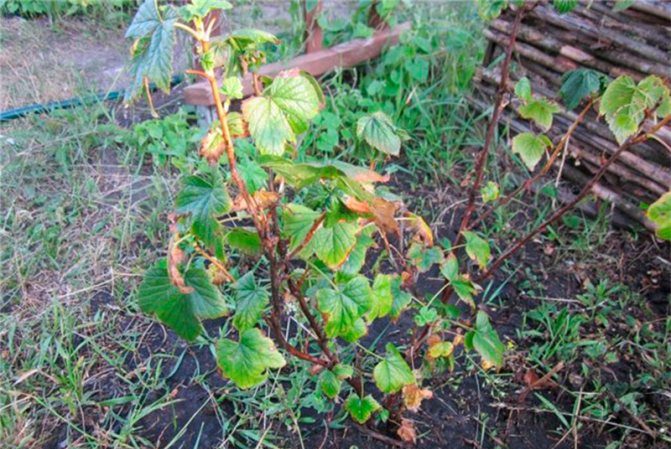
Nectric drying of shoots
It occurs due to the fungus Nectria ribis, which penetrates the soil along with water. Young shoots and adult branches are covered with reddish dots, which eventually turn into brown tubercles.
When the spores of the fungus mature, it causes the branches to turn black. The leaves turn yellow on the currant, the twigs dry out and die off.When signs of necrotic drying are detected, the affected branches are cut and burned at a distance from the garden plot. The remaining branches are treated with a solution of copper sulfate - 100 g of substance per 10 liters of water.
Attention! A solution of copper sulfate also serves as a prophylactic agent. To protect young plants from disease, currant roots are soaked for 5 minutes in a 1% solution before planting. The procedure protects not only from nectria drying out, but also from scab, powdery mildew, aphids.
Anthracnose

Fungal disease affects adult and young plants, is common in all regions of the country. Brown spots appear on the leaves, which increase in size over time. Petioles and shoots dry out, lose the ability to bear fruit. The peculiarity of anthracnose is that it most often affects red currant bushes.
The spread of the disease is facilitated by rainy and hot weather, non-compliance with the planting rules - sometimes gardeners forget to disinfect the soil and treat garden tools with Bordeaux liquid. Anthracnose is treated with a solution of colloidal sulfur - 30-40 g of the substance are diluted in 10 liters of water. The first time the shrubs are treated after the detection of the disease, the second - after 10 days.
Columnar rust
The disease manifests itself in the middle of the growing season with yellowish spots on the leaf plates. After 2-3 weeks, they turn brown, and after another 5-10 days they dry out and fall off. The shoots become lethargic and dry, the berries are deformed and stop developing.
Infected leaves are torn off and burned, and the rest are treated with fungicides - Agrolekar, Gamair, Rubigan. Recommended dosage and precautions are reviewed before processing.
Pests and the fight against them
If the currant dries along with the berries, the reason may lie in the appearance of insect pests. Some hibernate in the ground and crawl out with the arrival of heat, others find themselves in an area with rains or winds.
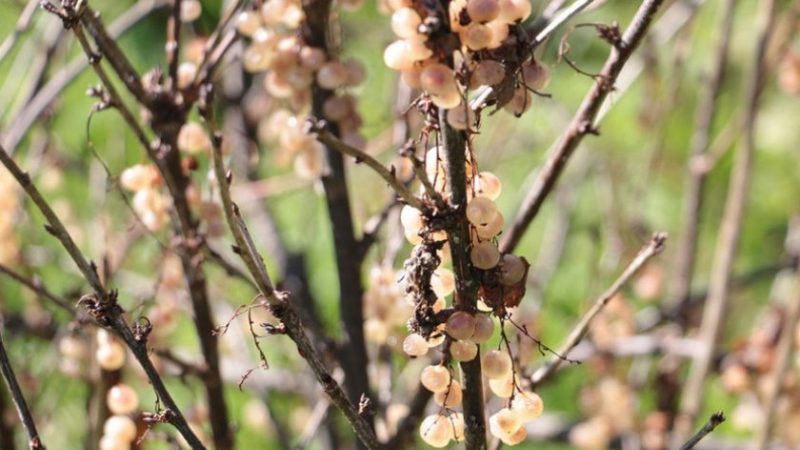
Fire
The caterpillar of this butterfly damages red and black currants by eating unripe fruits, which is why the latter ripen prematurely and dry out. The adult is a brown butterfly that lays eggs on the leaves. One caterpillar can damage up to 15 fruits.
The insect is frost-resistant - with the arrival of autumn, it hides in the ground, and in the new year it comes out with warmth to complete the development cycle. If a pest is found, it is recommended to remove the nests from the bush and destroy them. Then the currants are treated with "Karbofos" - 60 g of the substance and 8 liters of water are required to prepare the working solution. One bush consumes 1.5 liters.
Currant kidney mite
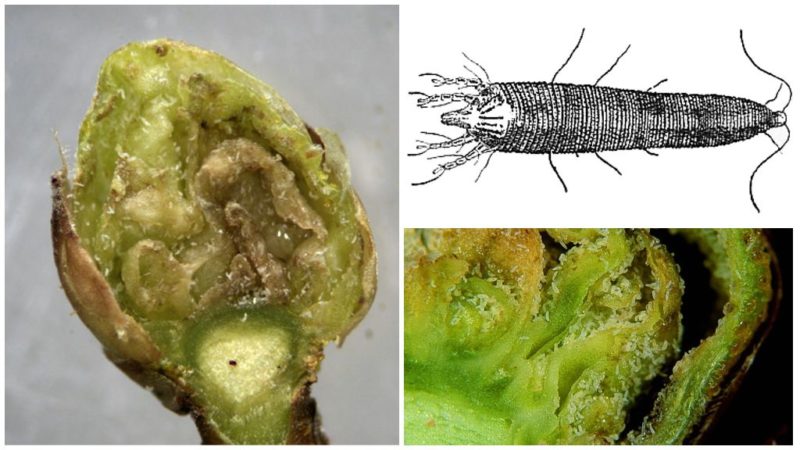
For currants, females of currant are dangerous kidney mite - white insects 0.3 mm long. If a pest appears on a currant bush, the plant will die with a probability of 80%. Females hibernate in the soil and lay up to 100 eggs. It is easy to recognize the damage - the berries dry out on the currants, the buds swell, and the leaves are deformed and brighten. The tick is carried by people, insects, birds, wind.
To get rid of the pest, tobacco infusion helps - 400 g of dry leaves are poured into 10 liters of hot water and insisted for two days. The infusion is filtered and diluted with water in a 1: 1 ratio. Apply the product immediately after preparation - spray the bushes from a spray bottle. For storage, the tobacco solution is not suitable.
Currant gall midge
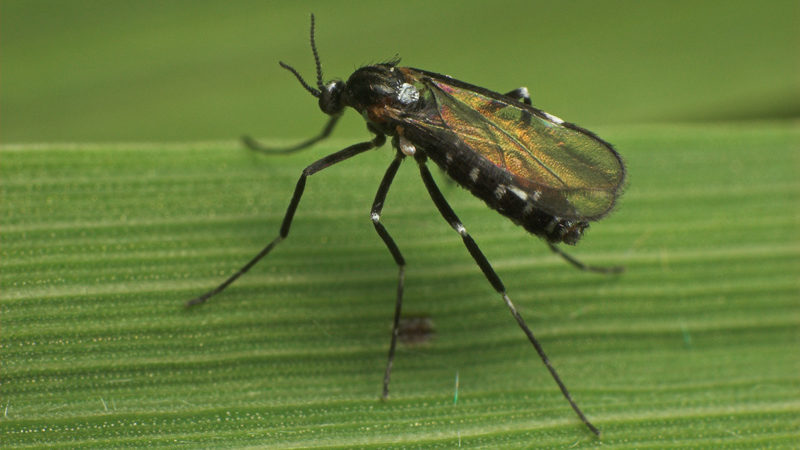
It is a small flying insect that looks like a mosquito... Distinguish between leaf and shoot gall midge. Leafy attacks young shoots, shoot— overgrown old bushes. The gall midge larvae are activated during flowering - the ovaries fall off, the bushes dry, the branches become fragile and brittle. If medical measures are not taken in time, the currants will die.
They get rid of gall midges with the help of "Karbofos" or "Actellik" preparations, or use a folk remedy - mustard infusion.To prepare 100 g of mustard powder, pour in 5 liters of water. Insist during the day and dilute in water in a ratio of 1: 5. Spray currants in the early morning.
Attention! Many insects are difficult to see on the bushes - some are masked by the color of the leaves, while others are only 0.1 mm long. Therefore, experienced gardeners are advised to regularly inspect the plantings - check the leaves on both sides, shoots, the base of the bush.
What to do if the cause could not be found
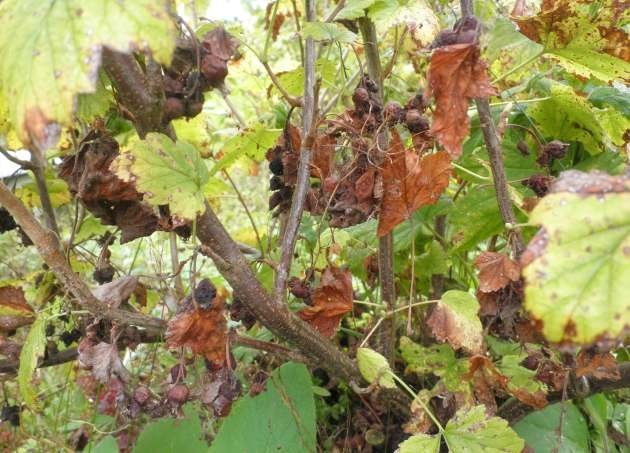
If the reason for the drying out of the bushes and berries is not identified, it is recommended to carry out a sanitary pruning - remove dry and damaged branches... They may show rot, stains, and wax deposits. Leaves with red, white and yellow spots are also cut off - these are signs of diseases. Lastly, dried and moss-covered shoots are removed. All removed shoots are burned to avoid the spread of diseases and insects.
It is important to pay attention to grooming. Perhaps the reason for the drying out lies in the lack of fertilizers. If the currants are not fed more than two years, rotted manure is brought under the bush (preferably at the end of April). If the bush dries up in summer, it is recommended to water it with a solution of chicken manure. Also during this period, attention is paid to watering, loosening, mulching the soil. All these procedures are aimed at strengthening the immune system and the healthy development of currants.
Prevention measures
In order for the currants to consistently bear fruit and delight with the harvest every year, special attention is paid to preventive measures. It is better to prevent problems from occurring than to spend time and effort fixing them.
Experienced gardeners recommend:
- Choose a variety in accordance with the growing region (early - for the Urals and Siberia, mid-season - for the middle lane, late - for the southern regions).
- Plant currants in hilly, sunny areas, protected from wind and groundwater. Favorable neighbors for currants are blueberries and gooseberries.
- For planting, choose two-year-old seedlings, disinfect them and soak them in a growth stimulator (Epin, Kornevin).
- Cover shrubs for the winter to protect them from frost and wind.
- Once every 10 days, spray the shrubs with soapy water - 250 g of grated laundry soap is required for 5 liters of water.
- To carry out sanitary pruning annually, once a year - shaping, once in 5 years - rejuvenating.
- Once every 10 days, loosen the soil to a depth of 5 cm. The procedure retains moisture and improves root nutrition.
- Mulch the plant with sawdust, needles, leaves and grass.
- Alternate organic and mineral fertilizers.
Conclusion
Drying of currants is a consequence of diseases or pests, mistakes in choosing a planting site and growing. Red and black currants suffer from nectria drying of shoots, columnar rust, anthracnose, gall midge, and kidney mites.
Sometimes the reasons lie in a deficiency or excess of food and moisture. To avoid drying out, gardeners regularly inspect currant bushes and carry out preventive measures: cut off old and dry shoots, mulch plantings, spray currants with soapy water.